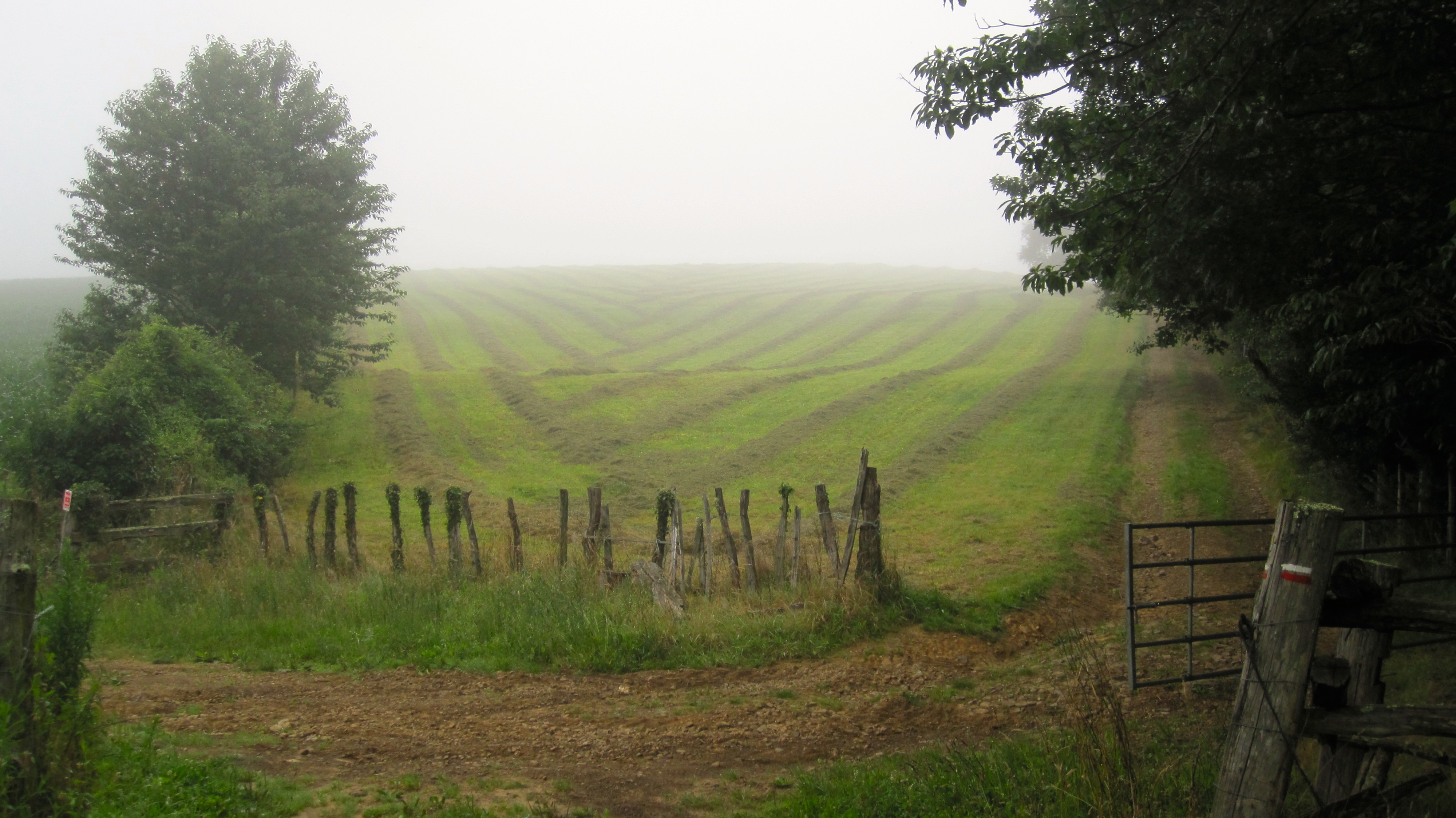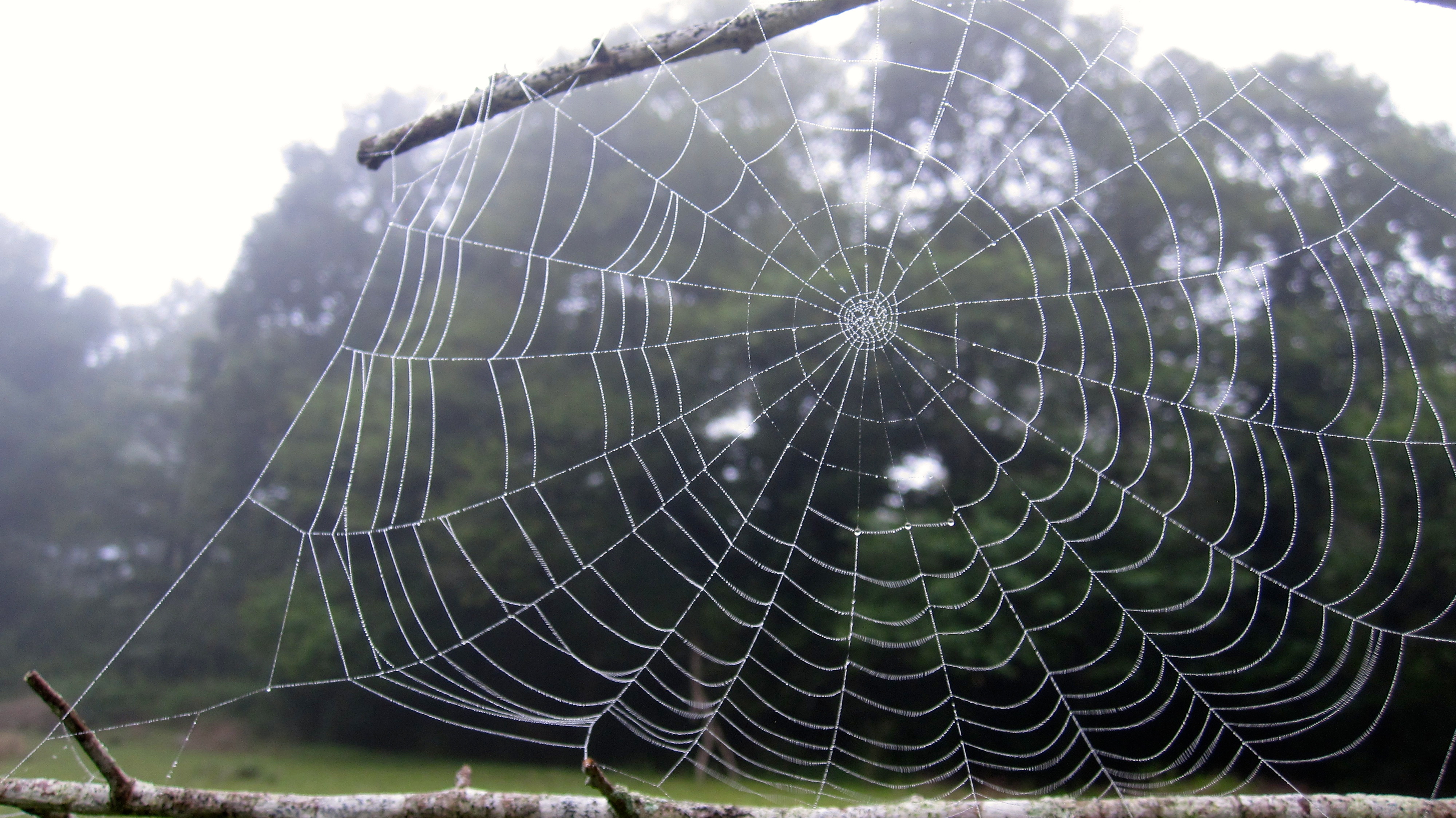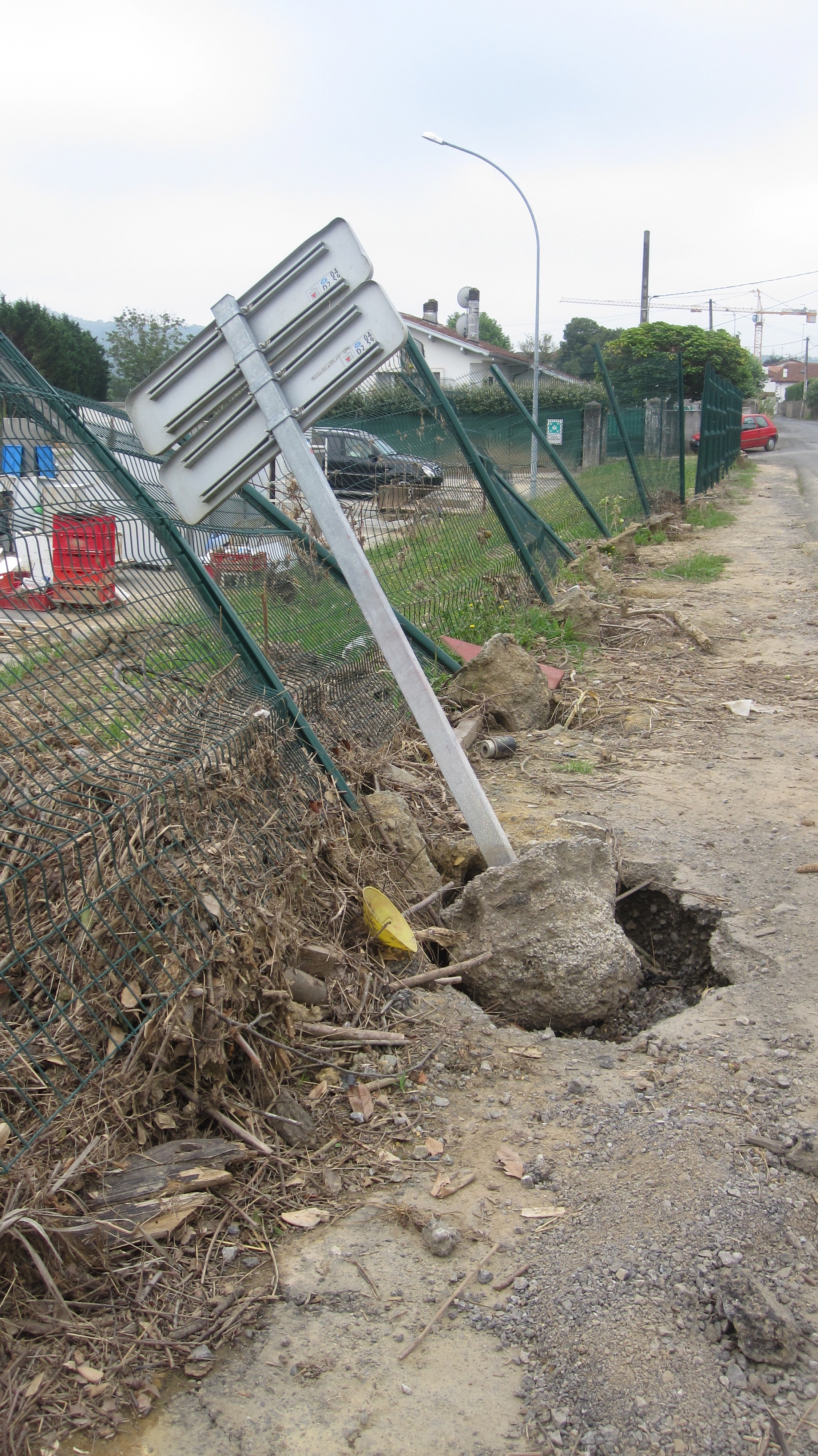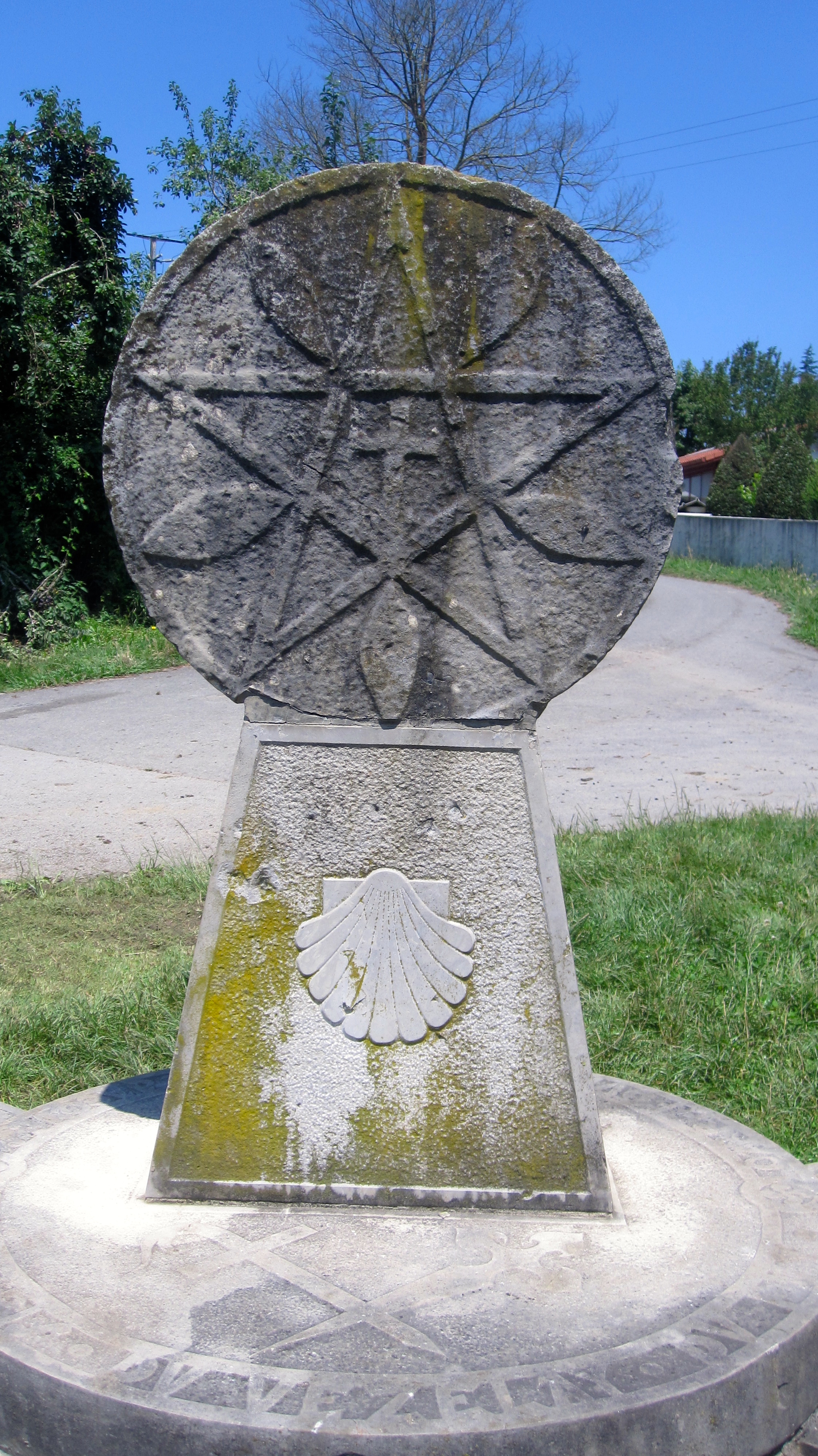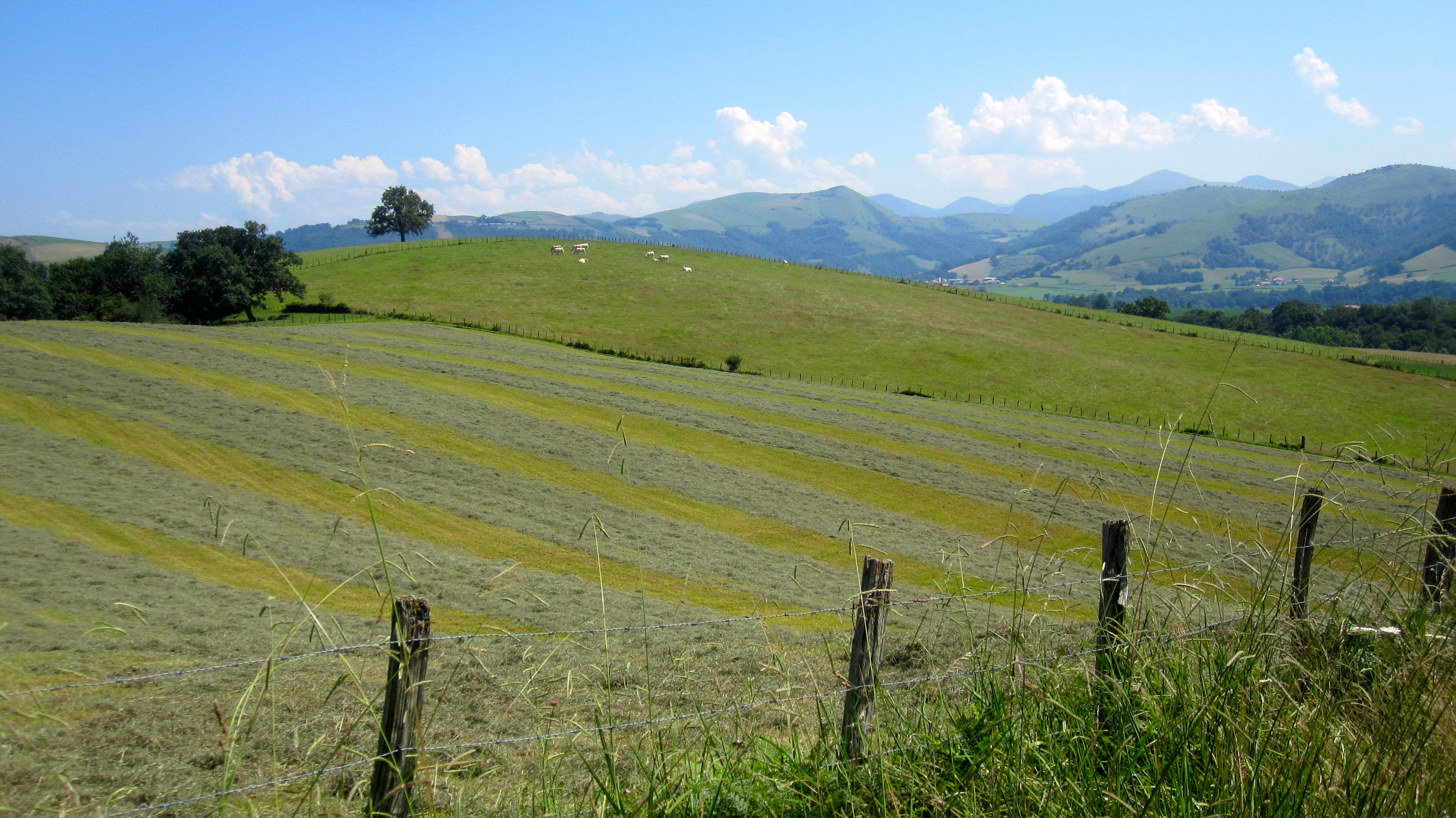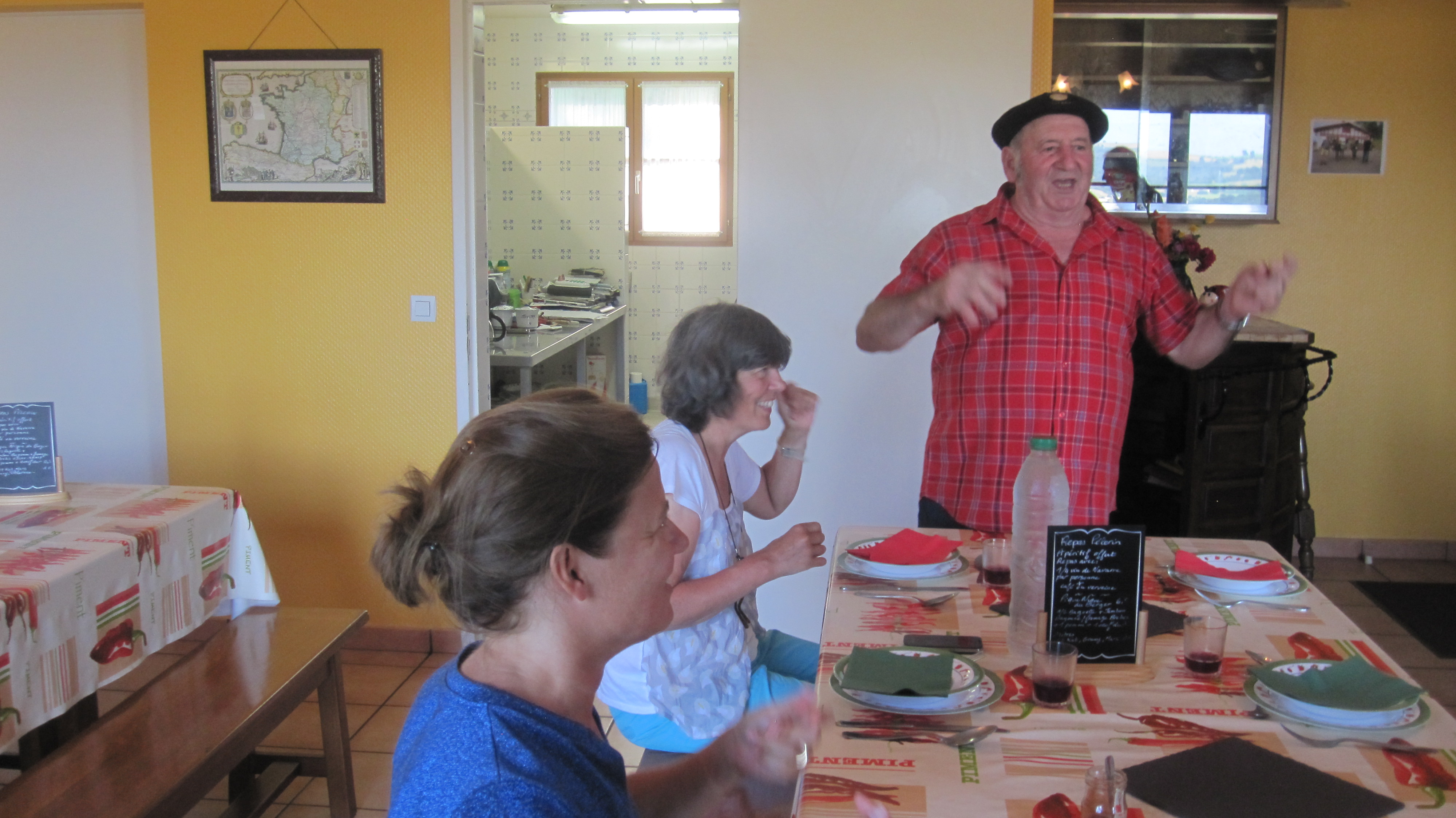DAY FOURTY
OSSERAIN-RIVAREYTE – OSTABAT-ASME
Paint the green leaves too and the wind’s coolness
The dust in the sunlight
The sound of insects, in the grass, in the summer heat
Then wait for the bird to choose to sing
If the bird won’t sing
That’s an adverse sign
A sign that the painting is bad…….
Jaques Prévert
Dense fog covered the village when I left that morning. Shortly after leaving
Osserain, I came to an ancient stone marking the border between Béarn and the once
independent kingdom of Navarre. With that, I entered the Land of the Basque.
The Basque language is very unusual because it does not have any similarities with
an Aryan language. Of the seven Basque regions, three are located in France.
Border stone between Béarn and Navarre
The fog had cast a great stillness over the country. Every spider web was covered
with tiny pearls of water.
The Basque houses have a very distinctive appearance. The color maroon can be seen
on many wooden elements outside of the house. Men like to wear the Basque hat.
Basque man mowing the grass with a scythe
A few days before I arrived at the town of Saint-Palais, in Basque called Donapaleu,
severe thunderstorms caused a lot of destruction. Some parts of a road were
completely washed away. It had not rained so much for 150 years.
Town Saint – Palais (Donapaleu)
Shortly after the town Saint-Palais, a stele is marking the meeting of three
pilgrimage ways to Santiago de Compostela. The stele is called Stele of Gibraltar
and refers to the Basque name “Chibaltarem”, which means “to meet.” The Via
Lemovicensis meets with the way from Puy-en-Velay (Via Podiensis) and the way
from Tour (Via Tourensis). The stele is made in the form of a Basque tombstone.
Stele of Gibraltar
From there, a steep road is leading up to a chapel on the top of the hill – Chapelle de
Soyarce. Some pilgrims rested under the shade of the trees. Also Luni and Mathilda
were there. They hitchhiked some of the way. It was very nice to see them again.
Up high in the sky, uncountable large vultures were circling the area. The view to
the Pyreneans was breathtaking.
Chapelle de Soyarce surrounded by trees
From farther away, the villages look like villages in the Austrian Alps. Since Saint-
Sever, I did not have to make reservations anymore. Like on the Camino in Spain,
it was on a first come first served basis. There were a lot of pilgrims in Ostabat-
Asme, a town with 230 inhabitants. In former times, it was a big pilgrim’s center
with sometimes 5,000 pilgrims staying overnight. In the restaurant beside the
church, I met Berit, a woman from Germany. We decided to walk together to a farm
one mile outside of the village and stay overnight there.
Village of Ostabat-Asme
The farm Gaineko Extea has 50 beds, but this day, only a Belgium and a Dutch
couple and Berit and I were staying there. The farm provided very comfortable
rooms, each with a balcony. Besides a delicious meal, we also got a music
performance. Bernard (I have forgotten his Basque name) was singing Basque
songs for us.
Bernard, the Basque hospitaliér, singing Basque songs
In the evening, I got a text message from Emeline. She had heard that I arrived in
Ostabat and suggested we meet in Saint-Jean-Pied-de-Port. I was overjoyed to be
able to see her again.
– Text and photos contributed by Garyo –


